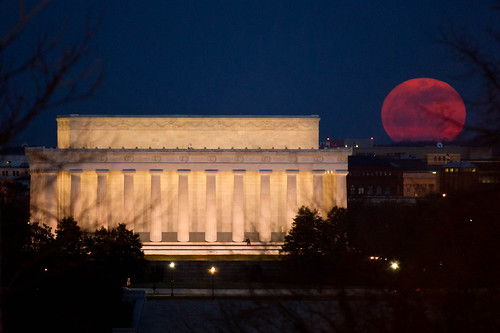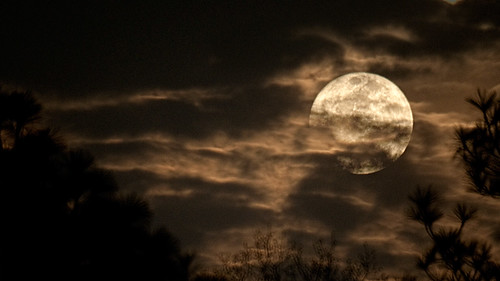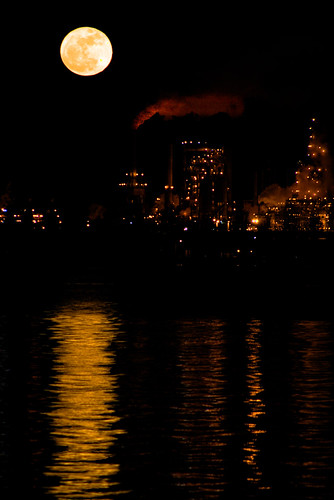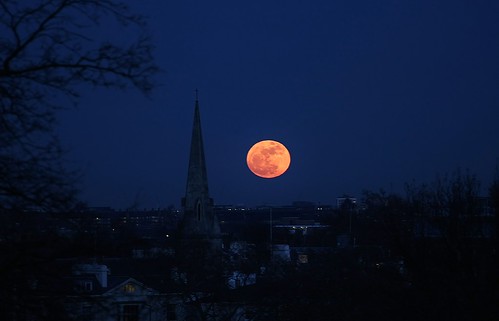Awesomeness Round-up – 3/21/11
- By Sara Mitchell
- March 21, 2011
- 4 Comments
No, it didn’t wear a cape or shoot lasers, but Saturday’s “supermoon” was a bit bigger and brighter than most full Moons due to its slightly decreased distance from Earth. It was blocked by clouds in some areas, but if you got a clear view – wasn’t it lovely? It was exciting to see the Moon trending on Twitter! We perused Flickr for some amazing shots of the supermoon from around the world…
The folks at Science@NASA put together a ScienceCast about this phenomenon, so you can check out the facts (and fiction) of a supermoon:
Speaking of the Moon, the fifth release of data from the Lunar Reconnaissance Orbiter has given us even more glimpses of the Moon’s amazing topography. Here’s a small sample of the more than 192 terabytes of data that LRO has sent back:

Credit: NASA/Johns Hopkins University Applied Physics Laboratory/Carnegie Institution of Washington
Not to be outdone by all of this Moon stuff, the folks from the MESSENGER mission announced some big news last week – MESSENGER successfully achieved orbit around Mercury on March 17th! Though the image here is from 2008, they expect to start releasing new images after April 4th.

Credit: NASA, ESA, A. Riess (STScI/JHU), L. Macri (Texas A&M University), and the Hubble Heritage Team (STScI/AURA)
Astronomers using data from Hubble have calculated the expansion rate of the universe with unprecedented accuracy, ruling out an alternate theory on the nature of dark energy. Hubble peered at Cepheid variables and one recent Type Ia supernova in spiral galaxy NGC 5584, using them as distance markers to measure the expansion of the universe. For more, check out the full release from HubbleSite.
Are you in the DC area? It’s still a couple of months away, but NASA Goddard will be opening the gates to the public on May 14th for Explore @ NASA Goddard! It’s an opportunity to take tours, do activities, meet scientists and engineers, and see what we do here! Blueshift will be there, so drop us a line if you’ll be coming by – we might have some goodies for you!
Finally, since everyone seemed to enjoy our random links last week: more things you probably shouldn’t be doing in your microwave | the physics of pruny fingers | diagnostics on an X-ray device built just weeks after Röntgen announced the discovery of X-rays | a look at why bananas are radioactive









Mr. Moon
I love the shot by Delos Johnson but i was wondering how he got the shot of the moon so sharp with the clouds and trees. Did he track it with a clock drive or is it SUPERimposed? I have tried to get shots like that and i would love to know how he did it without any PS manipulation…
Denise – You’d have to ask the photographer! It is a fantastic shot.
[…] week’s blog post from the folks at NASA’s Goddard Space Flight Center includes a sciencecast about the […]